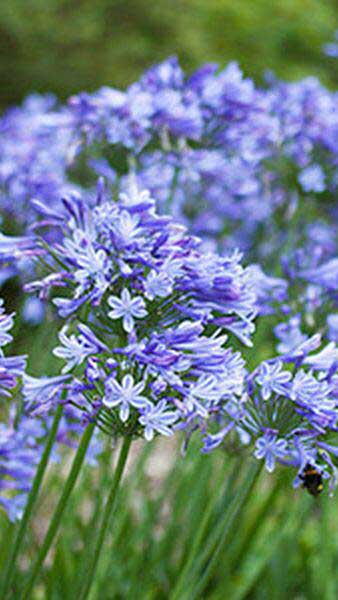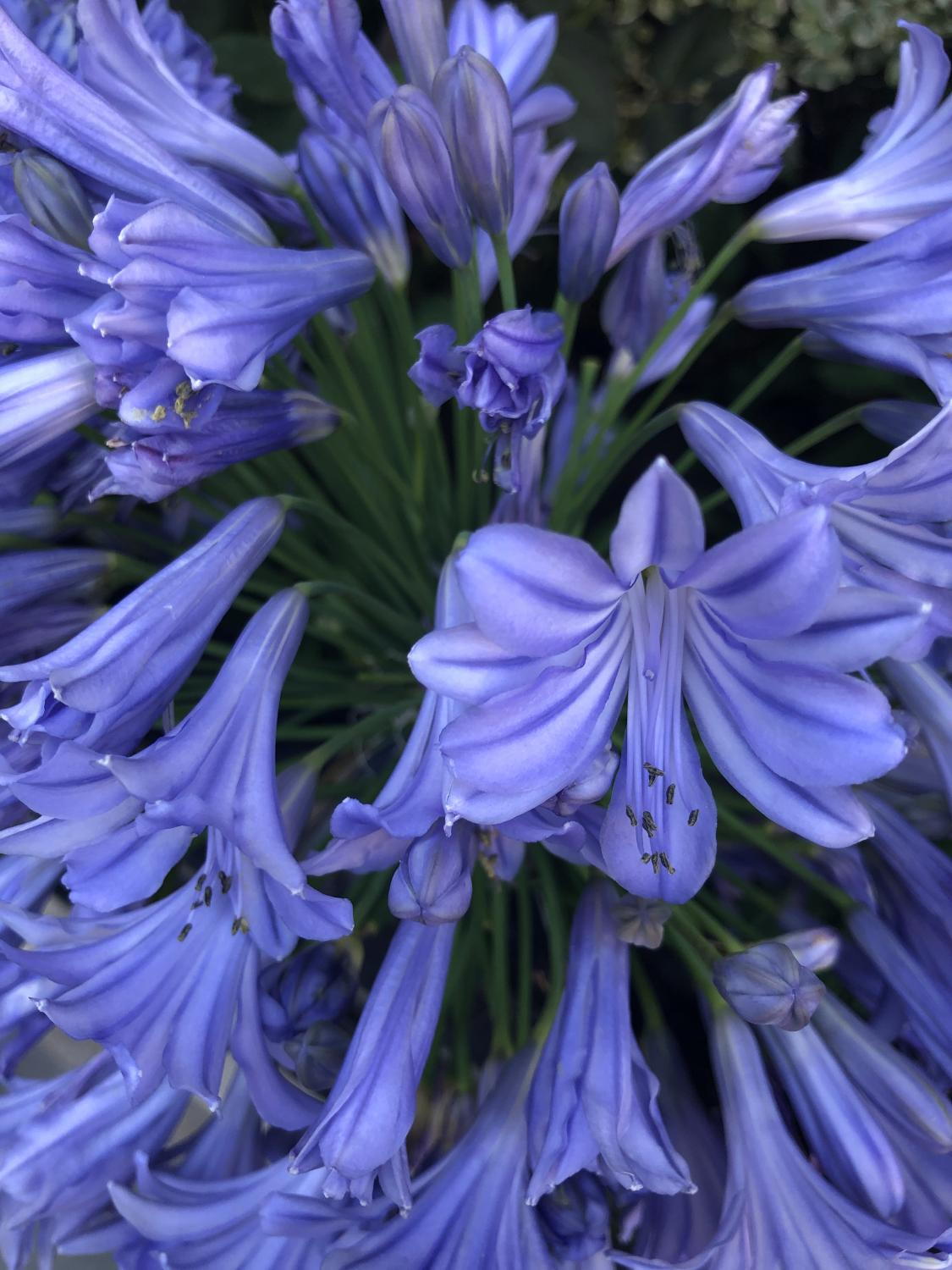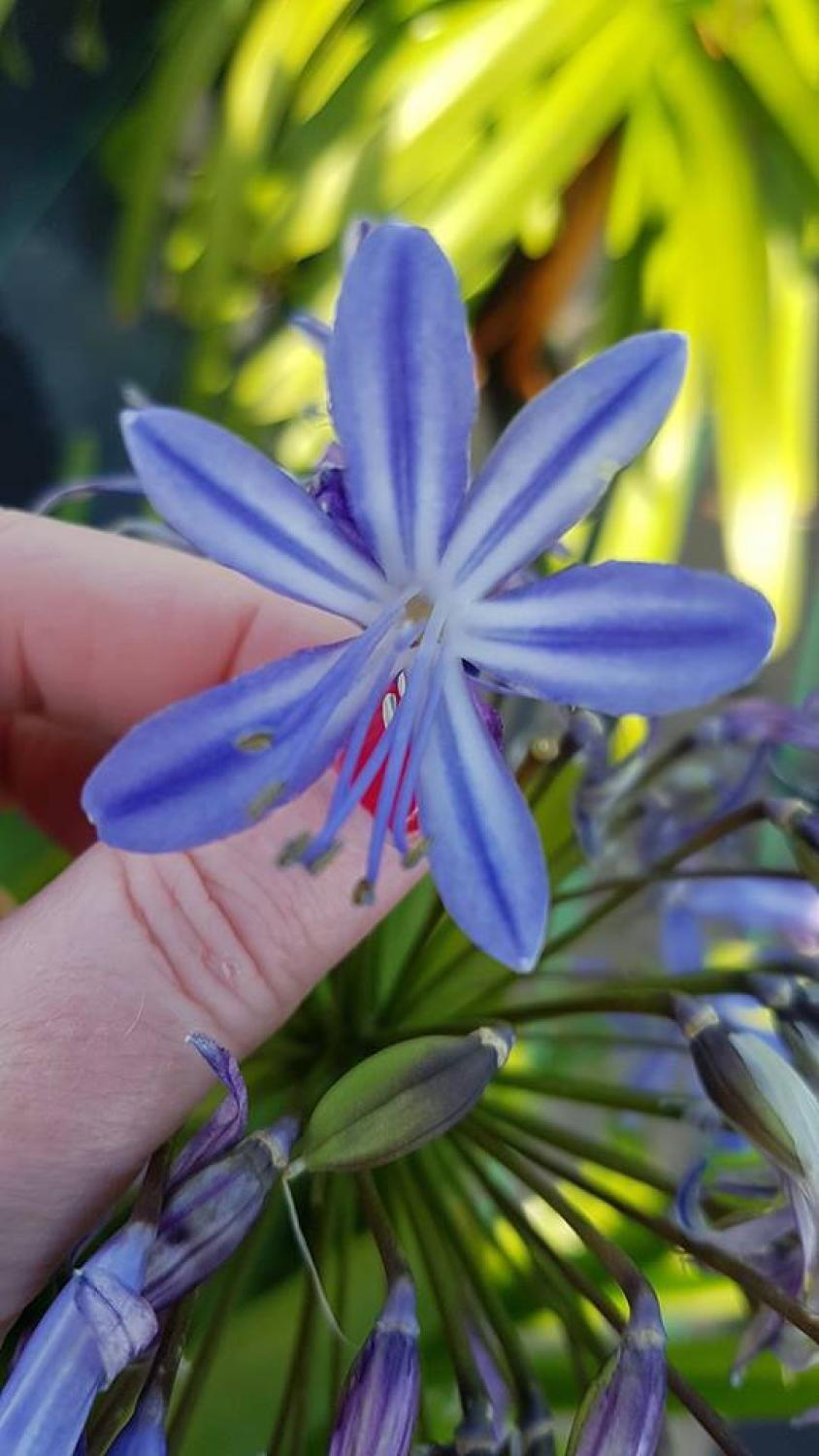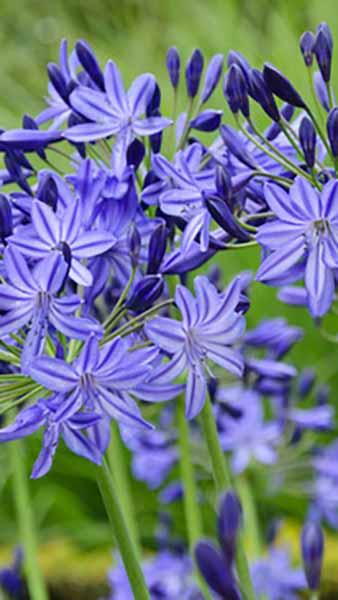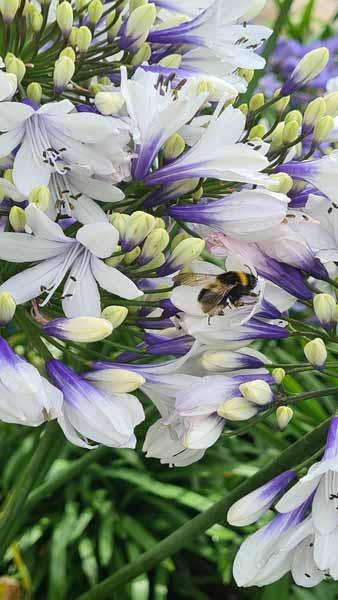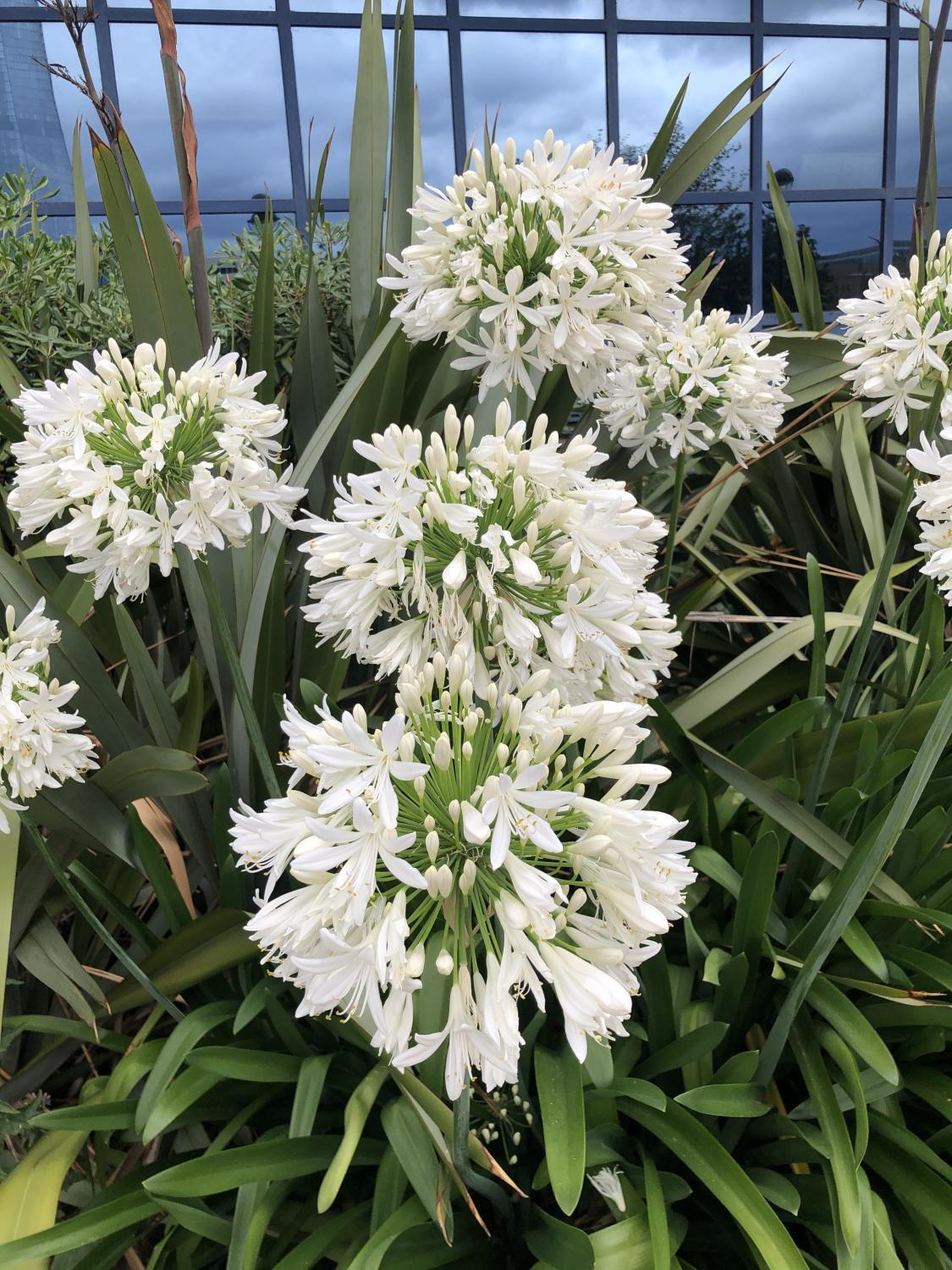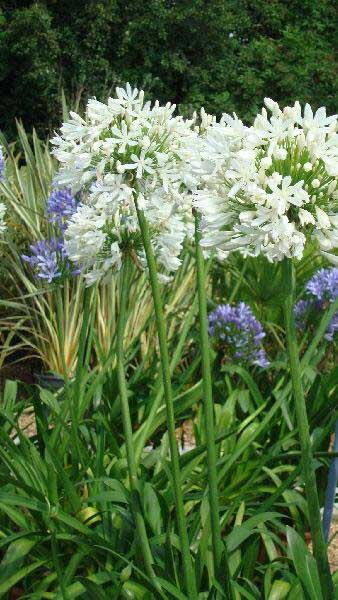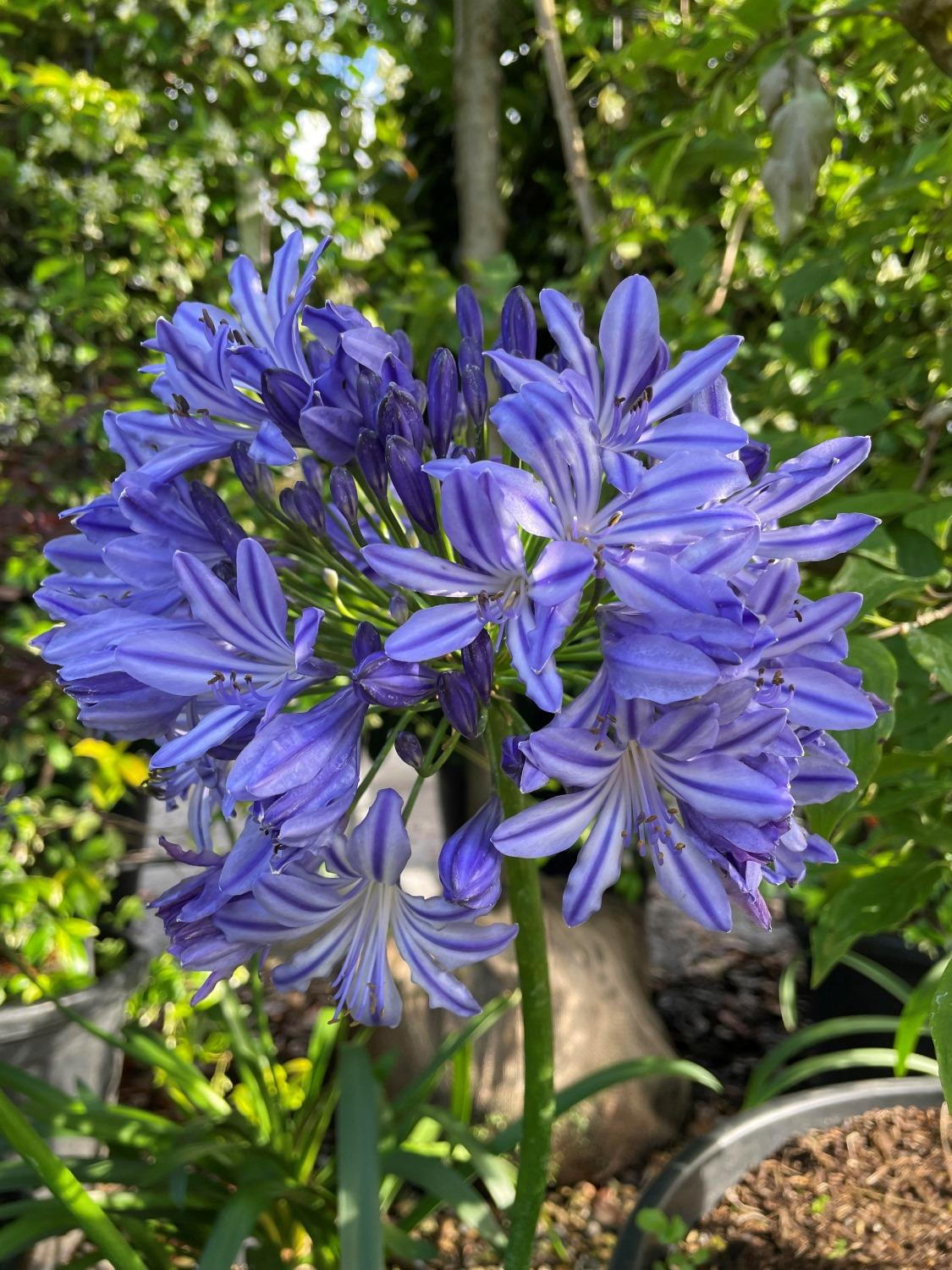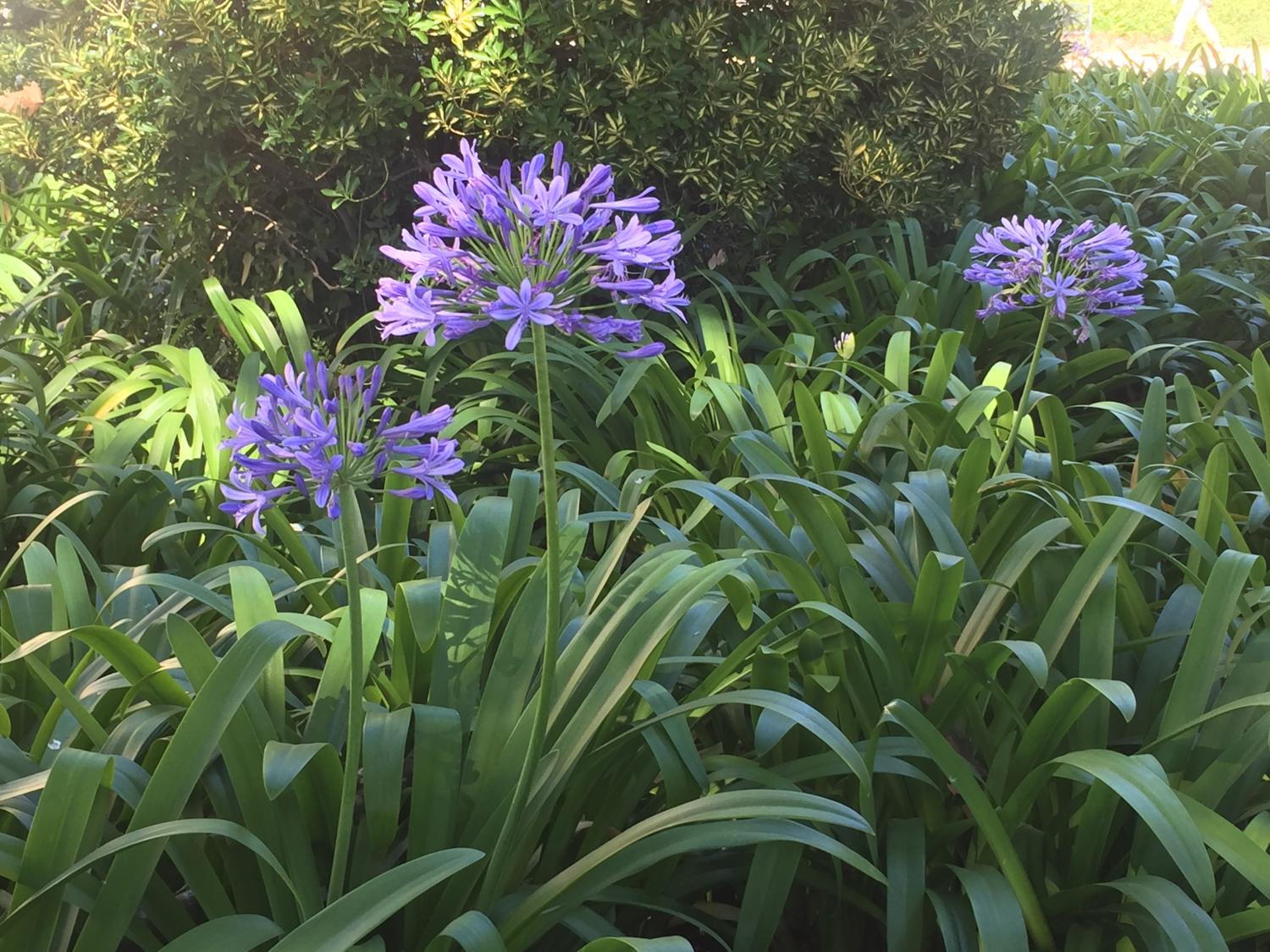Agapanthus Peter Pan. African Lily Peter Pan. Dwarf Blue.
Agapanthus Peter Pan, or African Lily Peter Pan, is a lovely dwarf Agapanthus to add to our perennials collection. Perfect for both city and country gardens, this reliable perennial will add bright splashes of blue to your summer garden!Native to South Africa, Agapanthus have long been popular garden plants in the UK, and this new dwarf variety has many great uses in your garden. In spring the long, arching, strap-like leaves emerge, forming a low, graceful clump. In late summer into the autumn, the flower stems shoot up above the foliage, bearing many small, funnel-shaped flowers growing in clumps, a lovely pale blue with a darker blue stripe down the middle of each petal, creating a striking combination. Butterflies and bees will flock to this late summer flower!Hardy in most parts of the UK, Agapanthus Peter Pan will grow to a mature height and spread of 10 to 50 cm in 2 to 5 years. Plant 25-30 cm apart. Clumps can be lifted and split in spring every 4 or 5 years. Cut back the flower stems when blooming is finished, and cut back the leaves in early spring to encourage fresh growth.Plant African Lily Peter Pan in full sun in a sheltered position, with a south, west or east-facing aspect. Agapanthus do best in a moist but well-drained sand or loam. Mulch over the winter in colder regions. Tolerant of salt, Agapanthus Peter Pan is a good choice for a coastal location, and will do equally well in a city setting as it is somewhat tolerant of urban pollution. Deer and rabbit resistant, Agapanthus Peter Pan is perfect for a country garden, too!The dwarf growth habit of Agapanthus Peter Pan will let it fit into many spots, no matter the size of your garden. It’s an excellent choice for container planting, and its brilliant summer flowers will brighten a roof terrace garden, courtyard garden or patio August through October. Just make sure that the roots in the pots do not freeze over winter. Planted towards the front of a mixed border, Agapanthus Peter Pan will be a pleasant foliage plant, and then a late-season stunner when the flowers appear. In a mass planting on a south-facing bank or slope, the show of blooms would be a striking addition to a larger landscape. Agapanthus Peter Pan is a beautiful new addition to the Agapanthus family. Its dwarf growth habit and beautiful blooms make it a worthwhile addition to your garden!
